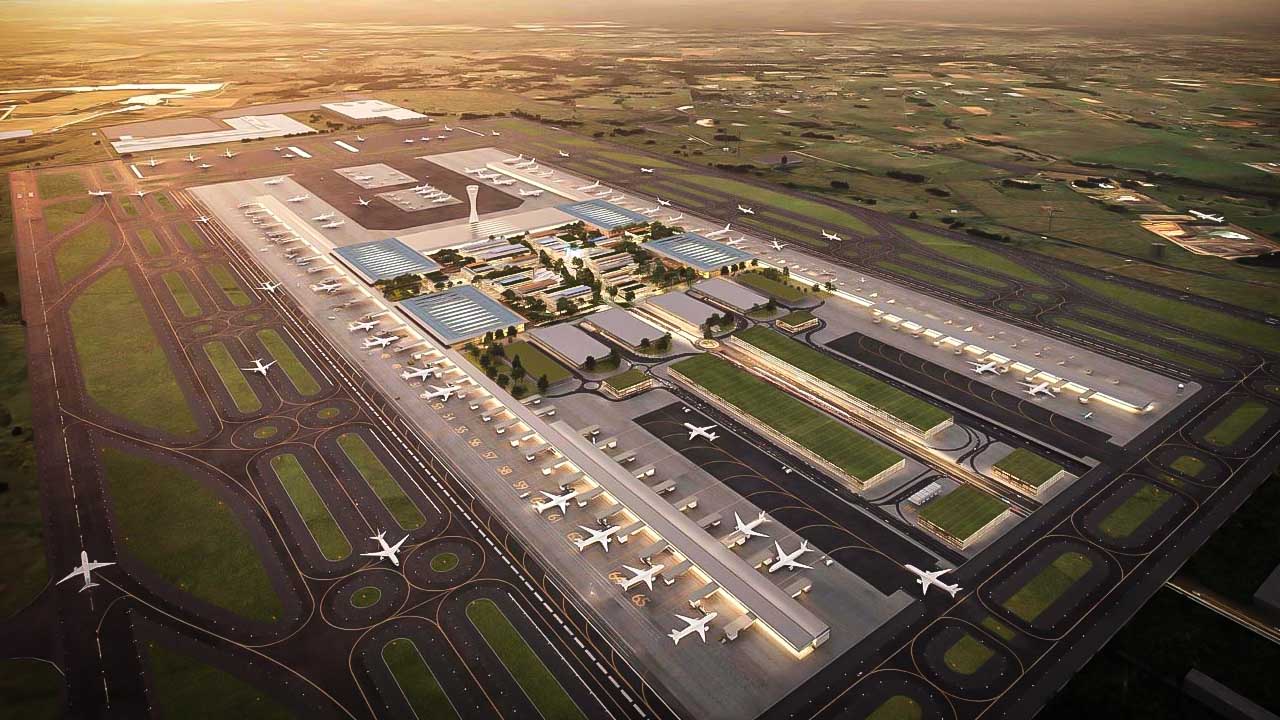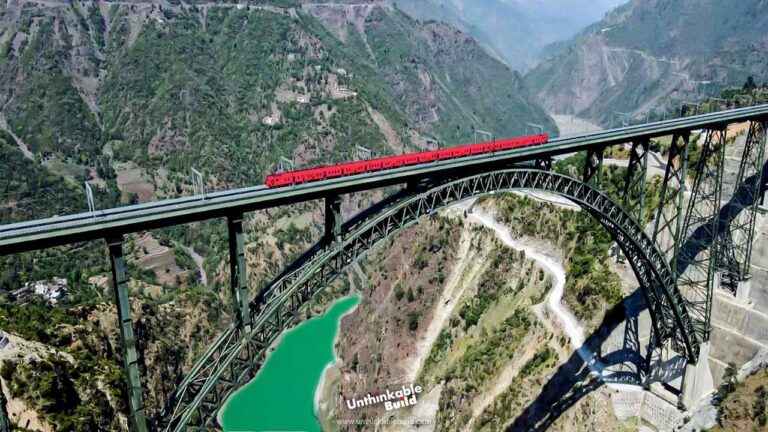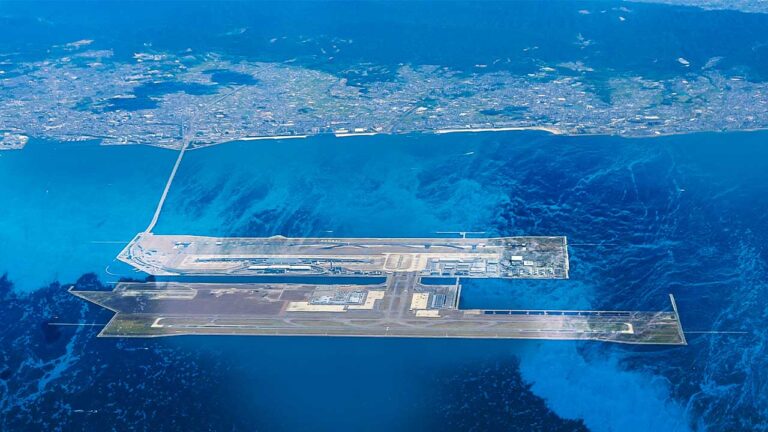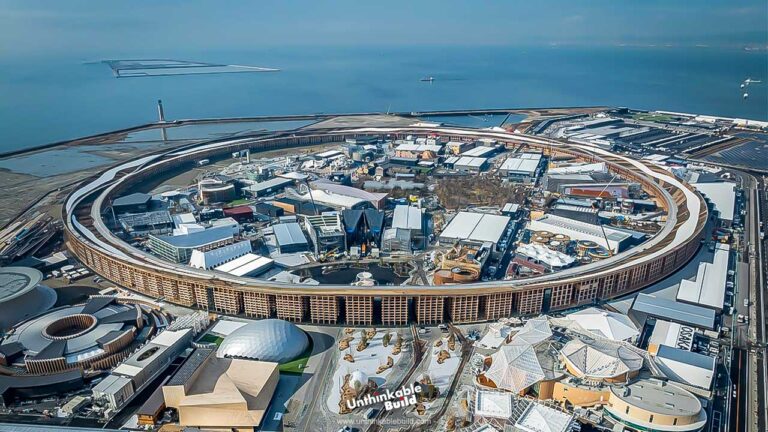Sydney Is Getting New $3.42 Billion Mega Airport
Sydney, the vibrant capital of New South Wales and one of Australia’s largest cities, is globally famous for its iconic Sydney Opera House. This architectural marvel, situated by the harbor, is widely recognized for its unique design that resembles sails caught in the wind.
Sydney is currently in the midst of a profound transformation, driven by several large-scale projects that are reshaping its infrastructure and transportation networks. One of the standout endeavors is the Western Sydney International Airport, also known as Badgerys Creek Airport. Set to open in 2026, this highly anticipated airport represents a major milestone in enhancing the region’s infrastructure and travel capabilities.
Kingsford Smith Airport, Sydney’s enduring aviation hub established in 1919, encounters notable challenges due to its close proximity — only 8 kilometers from the city center and encircled by rapid urban expansion on three fronts, bordered by Botany Bay to the south. These geographical constraints present substantial obstacles to the airport’s expansion efforts. Any attempts to enlarge its footprint necessitate costly endeavors such as land reclamation from the sea or the acquisition of land through compulsory purchases and suburb demolitions. Consequently, there have been numerous propositions to construct a secondary airport for Sydney since the 1960s.
Situated in Badgerys Creek, 50 kilometers west of Sydney’s central business district, Western Sydney International Airport is built on a site designated for airport development for over three decades. The project is funded by the Australian federal government.
The project is strategically positioned 44 kilometers west of Sydney’s Central Business District and 41 kilometers west of Sydney Kingsford Smith Airport. It sits about 20 kilometers north of Campbell town CBD.
The airport, valued at $3.42 billion, is under development by the Western Sydney Airport Corporation, which operates as a Government Business Enterprise under the Australian Federal Government.
Also Read: Dubai Mangroves: A Project to Save 72 km of Coastline
The design concepts for Western Sydney International Airport were initially crafted by the renowned Zaha Hadid Architects from London, UK, and Cox Architecture from New South Wales, Australia. The final design and construction are being undertaken by the Australian firm Multiplex, ensuring that the airport meets the highest standards of modern architecture and functionality.
Its 3.7-kilometer runway is designed to accommodate all types of commercial aircraft and features CAT III-B technology, which supports landings with a minimum visibility of 50 meters, allowing operations during foggy conditions. Unlike Kingsford Smith Airport, Western Sydney International Airport will not have a night-time curfew, allowing for both night-time take-offs and landings.
A key focus of the airport is to provide an exceptional passenger experience. The terminal is designed to offer a seamless and stress-free journey, emphasizing speed, ease, and reliability for travelers. Enhanced digital capabilities will support airlines in maintaining timely flight schedules and exceeding passenger expectations.
The initial phase of the project is designed to accommodate 10 million passengers annually, with future stages intended to increase capacity to over 80 million passengers per year by 2060. The airport will cater to both international and domestic travel, as well as air cargo operations, thereby expanding Sydney’s connectivity and supporting economic growth in the region.
Sustainability is another cornerstone of the airport’s development. This commitment extends from the design and construction phases to the airport’s ongoing operations, aiming to minimize environmental impact and promote positive community engagement.
The Western Sydney International Airport project is making significant strides in sustainability, particularly through its integration of solar energy solutions. The project exemplifies a robust commitment to sustainability through innovative use of solar energy technologies and comprehensive environmental management strategies. These initiatives underscore its dedication to minimizing environmental impact while advancing the region’s aviation infrastructure.
The terminal itself has been designed with a productive roof capable of generating solar electricity and harvesting rainwater. This dual functionality not only enhances energy efficiency but also contributes to sustainable water management on site. Additionally, renewable energy sources are set to provide 13% of the total energy consumption for the project, further bolstering its sustainability credentials.
In terms of environmental impact reduction, the project has identified a substantial 27% decrease in greenhouse gas emissions compared to the base case design. Key strategies include the use of precast segments with reduced volumes of steel and concrete, which collectively account for 58% of the project’s carbon footprint reduction.
Water efficiency measures are also integral to the project’s sustainability goals, achieving a 13% reduction in total water use through the selection of water-efficient equipment and fixtures, such as tunnel boring machines and temporary site facilities.
Western Sydney International Airport is set to benefit from robust rail and bus connections, enhancing travel convenience and accessibility for passengers across the region. This comprehensive transport infrastructure underscores the airport’s commitment to providing efficient and sustainable transport options from its inaugural day.
Key among these connections is the Sydney Metro – a dedicated rail line that will link the airport to Sydney’s broader metro network. This new metro line is slated to commence operations concurrently with the airport’s inauguration, ensuring convenient and efficient access for passengers seeking to travel to and from the airport.
In addition to rail connectivity, the airport will also be serviced by new bus routes connecting it to surrounding areas. These bus services are designed to facilitate easy transfers between the airport, bus interchanges, and the future Bradfield City Centre, enhancing overall accessibility for travelers.
The Western Sydney International Airport is situated approximately 7 kilometers from the World Heritage-listed Blue Mountains National Park, sparking significant concerns about conservation, environmental impact, and the local economy.
The airport’s potential impact on the Greater Blue Mountains World Heritage Area was thoroughly evaluated in its Environmental Impact Statement, which concluded that there would be no significant direct or indirect impacts on the World Heritage Values. Despite this assessment, various stakeholders have expressed concerns.
Also Read: Seoul Twin Eye: World’s First Spokeless Twin Ferris Wheel
Critics argue that the airport could jeopardize the Outstanding Universal Values and overall integrity of the World Heritage Area. There are apprehensions regarding the visual impact of flight paths over iconic landmarks like the Three Sisters, potentially altering the scenic beauty of the region. Additionally, there has been unease about the lack of a comprehensive assessment of the airport’s impact on declared wilderness areas, and concerns have been raised by Blue Mountains residents about potential effects on their quality of life and health.
The absence of a curfew for the airport also raises concerns about noise levels affecting both the Blue Mountains and Western Sydney. Economically, stakeholders worry about potential impacts on local tourism and the economy of the City of the Blue Mountains.
In response to these concerns, the Blue Mountains City Council has advocated for rigorous environmental assessments and management strategies to mitigate potential adverse effects on the World Heritage Area and local residents. This ongoing dialogue underscores the complex balance between infrastructure development, environmental preservation, and community welfare in Sydney’s evolving landscape.
Western Sydney International Airport represents a significant leap forward for Sydney’s infrastructure and travel capabilities. From its state-of-the-art design and sustainable initiatives to its strategic transport connections and economic potential, the airport is poised to reshape the region positively. However, challenges regarding its environmental impact, particularly in relation to the nearby Blue Mountains National Park, underscore the importance of balanced development and community engagement. As the project progresses, ongoing dialogue and responsible stewardship will be key to ensuring that the airport benefits both residents and visitors alike, while preserving the natural beauty and cultural heritage of the surrounding areas.







